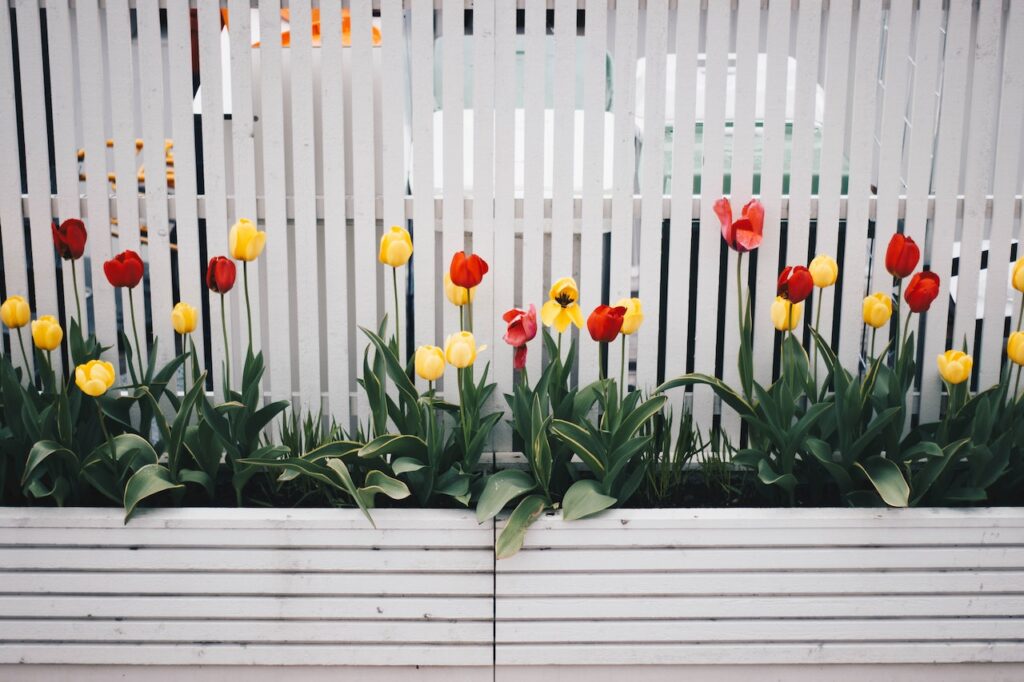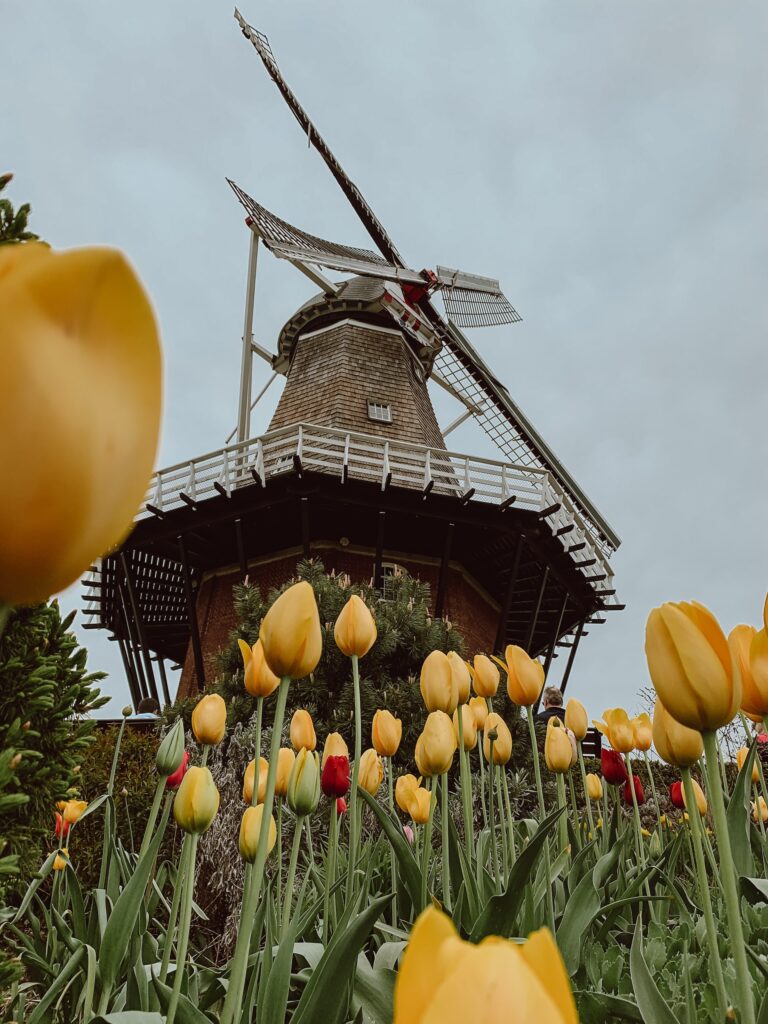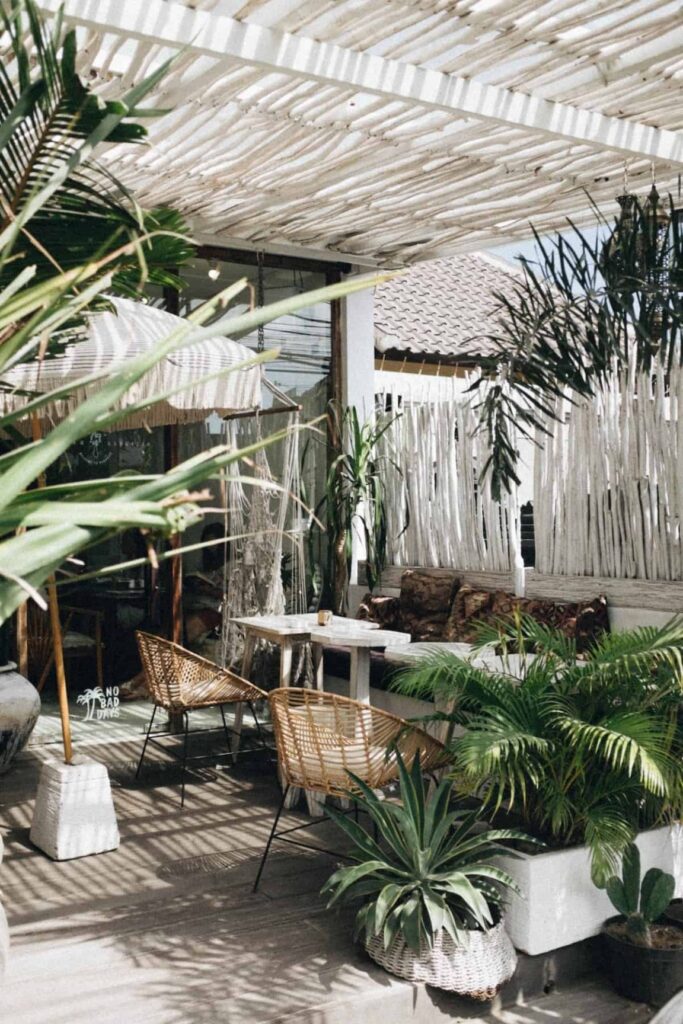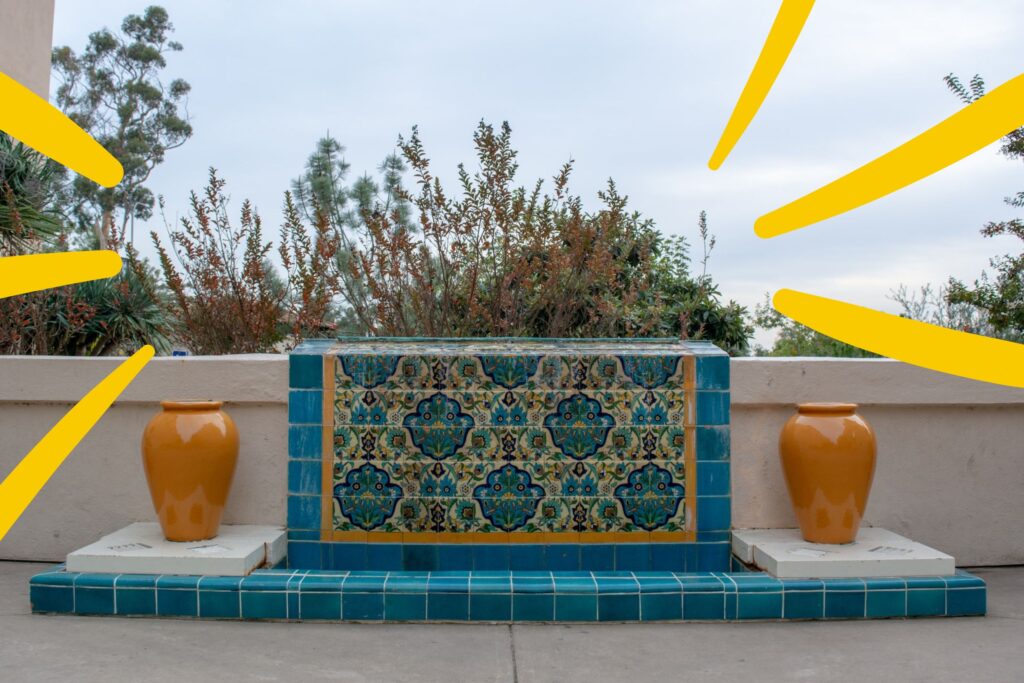Whether it’s because of the increasing cost of living, a perceived rise of incidents in the sky, or worries about the sustainability of travel, it’s been reported that Brits are feeling ‘holiday deprived’.
Indeed, as the Mirror reported last year, “Levels of vacation deprivation – where people work too much and go on too few holidays – worldwide have reached a 10-year high as adults navigate work and personal travel barriers.”
But that doesn’t mean you can’t enjoy some escapism from the comfort of home. Or, rather, the comfort of your garden…
As we contemplate a potentially lowkey end to summer 2024, we’re bringing some of our most beloved holidays into our backyard to help us make the most out of our garden. Here are 5 ideas for bringing our favourite travel destinations into your garden this year.
South Of France: Terraces, Herbs De Provence & Lots Of Lavender
Want to bring the sun-drenched Provencal countryside to your home? Who doesn’t? You’ll be pleased to hear that the essential elements of a true garden of Province are quite easy to replicate, even in grey, rainy England.
Gardens in the South of France cope with a dry climate and lots of sunlight, and this is reflected in the things that grow there. As such, drought-tolerant plants like Slender Cypress pines flourish here. Other plants typical of the region include climbing wisteria and jasmine, rose bushes and olive trees, the latter of the three being tough to grow in a British climate, though certainly not impossible.
The lavender fields of Provence are one of the region’s most defining features and you can’t capture the essence of a Provencal inspired garden without this plant. While not French, English Lavender is ideal for our climate and will scent your garden beautifully. Another way to capture the ambience of Provence is by growing your own culinary herb garden. Think thyme, savory, rosemary, basil, marjoram, and the aforementioned lavender, which all work together to make Herbs de Provence – a hallmark of the region’s cooking.
When it comes to traditional elements of Provencal garden design, an elegant terrace, ideal for enjoying long, languid afternoons is key. A large wooden table surrounded by wooden chairs is a must and consider a typical white varnished metal French garden set, too.
Crunchy gravel underfoot via meandering gravel pathways and patios is another essential design element popular in Provence. Adding a beautiful natural stone paving pathway to your garden would mimic this, not only visually, but aurally too!
And finally, to evoke that French je ne sais quoi, if you have plenty of space and the time to care for one, consider a peacock. Be warned, they are quite a handful to look after. On second thoughts, settling on an ornamental peacock will suffice – a special sculpture that makes a simple statement.
Read: 4 of the best weekend city breaks in the South of France

The Netherlands: Windmills & Tulips
The first thing that enters anyone’s head when thinking of the Netherlands (other than gouda, Cruyff and wooden clogs, perhaps) is surely tulips. Indeed, the national flower of the Netherlands is world famous, and no Dutch inspired garden would be complete without them. If you’re keen to relive holidays spent in the Low Countries, plant plenty.
Tulips are available in nearly every colour of the rainbow so you can play around with your favourite colours and create a unique colour scheme. Consider planting a coral garden for your very own peachy paradise.
To create this garden, think a mixture of coral, pastel salmon, peach and yellow-orangey apricot. For inspiration, look to Keukenhof, also known as the Garden of Europe, which showcases the very best of the Dutch floral design. There are over 800 varieties of tulips, all shapes, all colours, all heights. Other flowers typical to a Dutch garden include daffodils and hyacinths.
If you don’t have much room in your garden, look to the canal boats of Amsterdam for inspiration. Many have roof or container gardens – you can easily emulate your own container garden or make one on top of your shed, even in a fairly compact space.
Other Dutch icons to welcome into your Netherlands inspired garden include decorative clogs which you could use as plant pots and some minute windmills for good measure. For something a little more sophisticated, consider some kinetic windmill sculptures that channel the look of a traditional windmill, instead.


Bali: Tropical Touches Galore
If you want to bring the essence of Bali into your home and out into your garden, then start with plants. The serenity that the green, tropical foliage brings to your home can be soothing and rejuvenating in equal measure, especially in the relative drab of Britain.
While it’s hard to replicate Bali’s lush tropical landscape, you can create a convincingly verdant paradise with plants that have a tropical-like appearance. Hardy palm trees like the Windmill palm or Trachycarpus fortunei do well here, as does the Wagnerianus, often affectionately called the ‘waggie’.
Go further. Nothing says island life like furniture and gardenware made from rattan and bamboo canes. To ramp up those tropical vibes, consider a pond showing off the lilies so beloved of the island, if you’re to push the boat out as far as it can go!
Finally, Balinese architecture channels the power of pavilions beautifully – build a Balinese baronial in the garden, adding a cabana frame to really emphasise the structural integrity of the project. And don’t forget a hammock!


Spain: Mediterranean Vibes & Mosaics
Because of the warm climate, the Mediterranean people live an outdoor lifestyle where alfresco dining happens daily; long, lazy meals outdoors and siestas in the shade to finish certainly sounds ideal to us!
Generally speaking, Mediterranean gardens are generally defined by gravel and paving instead of grass, which will be a relief to those not blessed with a lawn.
While you may not be able to grow the same exotic style plants and flowers that you would in the Mediterranean, consider adding a Mediterranean herb garden, allowing you to add the smell of the region to your garden and its fresh flavours to your cooking.
Terra cotta pots in warm pinks and reds and also plenty of clay ornaments are essential for evoking that Mediterranean aesthetic. If you’ve the space, then a long communal table under a pergola is another hallmark of a great Mediterranean outdoor space. And of course, no Spanish garden would be complete without mosaics.
Read: 9 of Summer 2024’s biggest tile trends

Japan: Structure & Symbolism
According to Goodhousekeeping, “when making a Japanese style garden the aim should…be to create a mood of mystery, calm and tranquillity and capture something of the essence of nature where you can restore your inner harmony”.
We couldn’t have put it better ourselves.
No Japanese garden would be complete without an ornamental or fruit bearing tree. If you have a larger garden, we think Japan’s unofficial national flower, the Cherry Blossom, is just the thing. Japanese maple trees are also traditional and as the RHS points out, are ”well suited to the restricted space of modern suburban gardens, whether planted in the ground or in containers”.
Plum trees are another popular addition to Japanese gardens, and grow abundantly in Britain from August to October.
When it comes to invoking the essence of a Japanese garden, and if space permits, paths, pagodas and ponds should be incorporated into the design. Japanese gardens are a place for meditative reflection; a pond, with the trickling sound of water, is an integral part of a Japanese garden, and is said to carry qualities conducive to relaxation and reflection.

If your pond is large enough, consider a small bridge over it, to evoke a Japanese pagoda garden. Go further and introduce Koi carp to the pond, known as living jewels in Japanese culture. Finally, stones play a huge role in Japanese culture gardens and moss is used extensively. For a decorative touch, a traditional Japanese garden lantern made from stone completes the aesthetic.
Need more garden inspiration? Check out our article on 5 IDEAL ways to make your garden a sanctuary in time for Spring.




